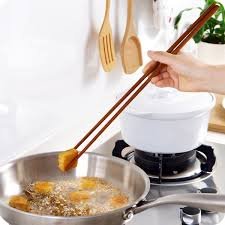Chopsticks are more than just eating utensils; they are cultural symbols, tools of tradition, and instruments that have shaped dining practices across East Asia for over three millennia. From their origins in ancient China to their widespread use in Japan, Korea, and beyond, chopsticks have evolved in design, material, and significance. This article explores the rich history, cultural importance, etiquette, and environmental considerations surrounding chopsticks.
Table of Contents
The Origins and Evolution of Chopsticks
The earliest evidence of chopsticks dates back to the Shang dynasty (1766–1122 BC) in China. Archaeological findings, such as bronze chopsticks excavated from the Ruins of Yin near Anyang, suggest that these utensils were initially used for cooking rather than eating. Over time, chopsticks became the primary eating utensils in East Asia, with each culture adapting them to their culinary needs and customs.
Materials and Design Variations

Chopsticks are crafted from various materials, each offering unique characteristics:
- Wood and Bamboo: Traditional and lightweight, these materials are favored for their natural feel and ease of use.
- Metal: Stainless steel and titanium chopsticks are durable and easy to clean but can be slippery, requiring textured surfaces for better grip.
- Plastic: Commonly used in disposable chopsticks, they are cost-effective but less environmentally friendly.
- Luxury Materials: Ivory, jade, and gold chopsticks are used for special occasions and as status symbols.
Designs also vary by culture; for instance, Chinese chopsticks are typically longer and thicker, while Japanese chopsticks are shorter with pointed tips, suitable for delicate foods like sushi.
Cultural Significance of Chopsticks
In East Asian cultures, chopsticks are imbued with symbolic meanings:
- China: The use of chopsticks reflects Confucian values of harmony and respect. Confucius is reputed to have said, “Knives are for warriors, but chopsticks are for scholars,” emphasizing the peaceful nature of dining.
- Japan: Chopsticks are integral to Japanese tea ceremonies and everyday meals. The etiquette surrounding their use is meticulous, reflecting the Japanese emphasis on respect and mindfulness.
- Korea: Korean chopsticks are often made of metal and are used in conjunction with a spoon, highlighting the importance of both utensils in Korean dining traditions.
Chopsticks Etiquette Across Cultures
Proper use of chopsticks is crucial in many East Asian cultures, with specific dos and don’ts:
- China: Avoid tapping chopsticks on the bowl, as it resembles the actions of beggars. Do not stick chopsticks upright into a bowl of rice, as it resembles funeral rites.
- Japan: Never pass food directly from one pair of chopsticks to another, as this mimics funeral customs. Do not point with chopsticks or use them to skewer food.
- Korea: Rest chopsticks on a holder (hashi-oki) when not in use, and never cross them, as it symbolizes death.
Environmental Impact and Sustainability

The mass production of disposable chopsticks has significant environmental implications. In Japan alone, approximately 24 billion pairs are used annually, leading to deforestation concerns. Efforts are underway to promote reusable chopsticks and sustainable practices. For example, companies like ChopValue are repurposing used bamboo chopsticks into durable products, reducing waste and promoting sustainability.
Learning to Use Chopsticks
Mastering the use of chopsticks can be challenging for beginners. The basic technique involves holding one stick stationary between the thumb and index finger, while the other is manipulated with the middle and index fingers to grasp food. Practice and patience are key to becoming proficient.
Also read Medusa Piercing The Ultimate Guide to Philtrum Piercings
Conclusion
Chopsticks are more than just tools for eating; they are cultural artifacts that embody the history, values, and traditions of East Asia. Understanding their origins, cultural significance, etiquette, and environmental impact enhances our appreciation of these everyday utensils. As global interest in Asian cuisines grows, so too does the importance of respecting and preserving the traditions associated with chopsticks.


